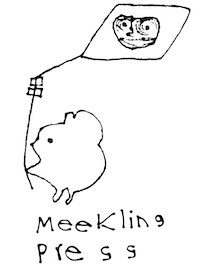
Letterpress printing is basically using a press to print raised type and images. Traditionally, this is done with movable type, a technology that started in the west with Gutenberg in the 1440s, and around 400 years earlier than that in China – each letter is a piece of metal or wood, arranged together to make words, sentences, paragraphs. Even the white space between words and lines has to be accounted for with a little piece of metal (slightly under type high*, so it won’t ink & print). In the late 19th Century, commercial printers and newspapers moved away from hand-set type to linotype, in which entire lines of type are cast from hot metal using a linotype machine – much faster than setting them letter by letter! It wasn’t until the 1960s and 70s that newspapers moved from letterpress printing to offset lithography and digital typesetting.

We do most of our letterpress printing with hand-set type and linoleum cuts, but sometimes we’ll also take advantage the new high-tech letterpress method in wide use today of photopolymer plates – where a plastic plate is made from a computer file and then mounted on a base and printed on the press. We used polymer plates to print the covers of On the Stairs, for example.
There are different types of presses, but ours is a floor-standing platen press made by Shniedewind & Lee in Chicago in the 1880s. Before it came to us, it lived for thirty years or so in the back of a bookshop, and before that it belonged to a Baptist church where it was used to make programs and newsletters. Most of the metal type we have comes from that church, too. At some point in its lifetime, the press was hooked up to a motor, probably in a situation something like this one, with several presses connected to a motor by belts going up to the ceiling:

We don’t have a motor for our press – instead we use a treadle to power it by foot, which is a great workout, and probably makes us really good at biking or kicking. When a design calls for more than one color, the colors have to be printed one at a time, the press cleaned off and re-inked for each new color, and the paper fed through again, by hand. It’s a slow process, and meticulous, but I find it totally addicting & wonderful, a tactile expression of something abstract as language, thought, poetry.
Let me know if you have any questions & I’ll do my best to answer them. I love learning & talking about letterpress! Also check out the following websites for lots more information:
Briar Press
Five Roses
Letterpress Commons
-Rebecca


Leave a Reply